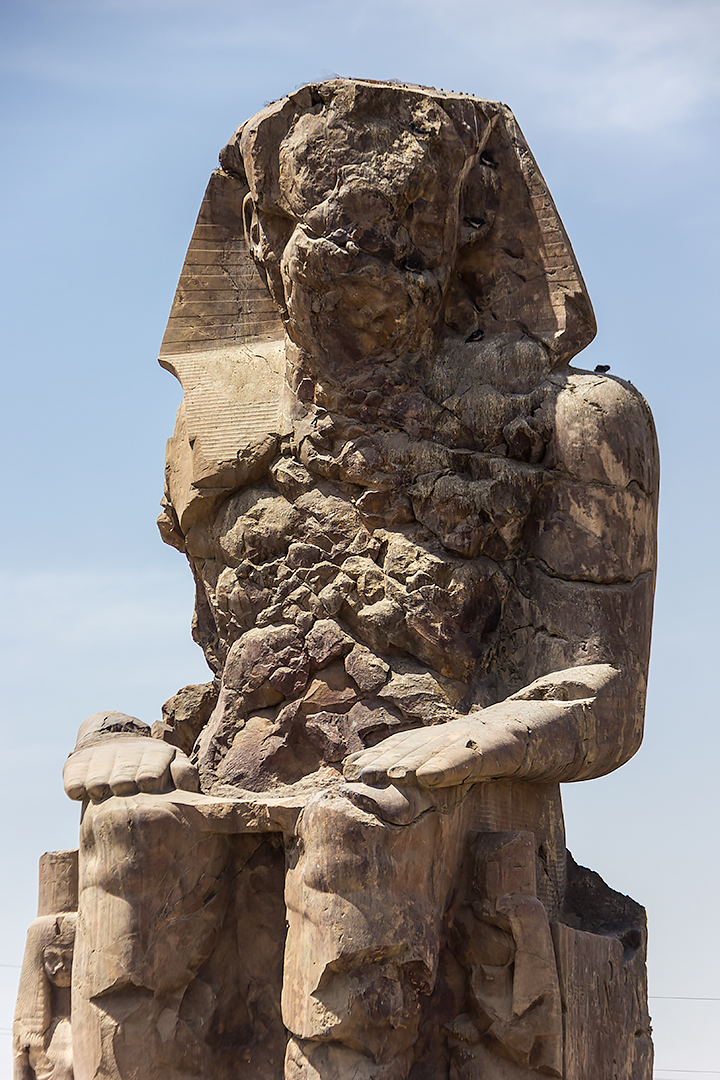Colossi of Memnon
Famously known as the Colossi of Memnon, they are actually giant statues of Pharaoh Amenhotep III. Memnon was an Ethiopian King and hero of the Trojan War. He was fighting for Troy and killed by Achilles. He was supposedly the son of Dawn. The Colossi of Memnon take his name in a curious manner associated with dawn. In 27 BC an earthquake further damaged the statues that were already in bad condition. After this earthquake people began reporting hearing sounds with some of those reports describing it as singing and others music. These sounds were said to be coming from a new crack in the statue. These sounds were always reported at or just before dawn. Hearing the sound also supposedly bestowed luck and had oracular powers. Greek historians and Roman Emporers came to hear it. It features in stories by Henrick Ibsen and Oscar Wilde according to Wikipedia [1].
What about Pharaoh Amenhotep III? Pharaoh Amenhotep III reigned about 1388-1353 BC. He was the father of the much more famous Amenhotep IV, who changed his name to Akhenaten and created his own, brief religion. The modern world’s interest in Akhenaten has somewhat overshadowed Amenhotep III, who apparently had a long, prosperous, and powerful rule. The arts flourished under him and we have more statues of him than any other Pharaoh. He built profusely, including the mortuary temple where the colossi stand. Sadly, he built the mortuary temple too close the Nile flood plains and the temple didn’t survive. Only the vast ruined colossi remain.
[1] https://en.wikipedia.org/wiki/Colossi_of_Memnon
https://en.wikipedia.org/wiki/Mortuary_Temple_of_Amenhotep_III
 James Lawton
James Lawton